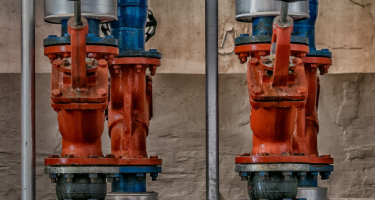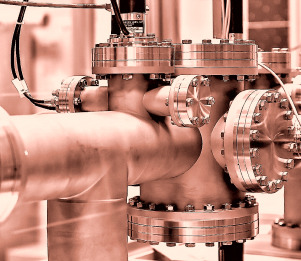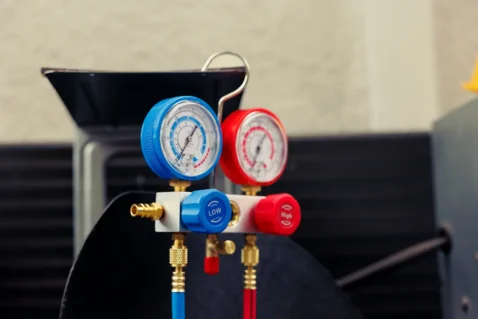
October 2, 2025 /
Gas equipment – part 1
A gas boiler is the heart of the heating system, and the choice between floor-standing and wall-mounted models is not always easy. Each group has its advantages: wall-mounted units save space, while floor-standing ones provide high performance. In addition, one must consider the number of circuits, the possibility of connecting a boiler tank, and the type of combustion chamber. A wrong choice can lead to extra costs and inconvenience in operation. In this article, we examine in detail the main types of gas boilers and the situations when it is better to choose one or the other option. This will allow you to understand in advance which solution will be optimal for your house or apartment.
The modern market offers a wide range of heating equipment: steel and cast-iron boilers, with built-in burners and separate burner units, boilers running on diesel fuel, gas boilers, solid fuel (wood and coal) boilers, electric boilers, air heaters. Navigating this variety is not easy.
Today a heating boiler is a technically complex and potentially hazardous device that requires regular maintenance. Design, installation, and operation of boiler equipment should only be entrusted to specialists with proper education, experience, and professional tools. The same applies to the entire heating system — it must be coordinated with the boiler equipment. Only in this way can all the advantages of modern technologies be used to the fullest.
Gas boilers: classification
Gas boilers are classified by the type of burner and its location:
- with fan-assisted burners;
- with atmospheric burners;
- a separate subclass — wall-mounted gas boilers.
Floor-standing and wall-mounted gas boilers
Floor-standing boilers are installed on the floor and usually connected to a storage water heater (boiler tank) for hot water supply.
Wall-mounted boilers are most often used in apartments and private houses up to 300 m². They are compact, mounted on the wall, and can be installed in the kitchen, bathroom, or attic.
Single-circuit and double-circuit
- Single-circuit — designed only for heating the premises.
- Double-circuit — provide both heating and domestic hot water.
The advantage of double-circuit boilers is obvious — one unit solves two tasks. However, if the house has central water supply but no heating, it is more logical to install a single-circuit boiler.
Wall-mounted boilers use the instantaneous water heating principle. If hot water demand is low (10–15 l/min with a 30°C temperature rise), a double-circuit instantaneous boiler is a good solution. A more comfortable option is boilers with a built-in storage tank:
- they have 45–60 liters of hot water ready for use;
- they allow you to use hot water even during temporary gas interruptions.
Disadvantages: larger size, greater weight, and a small additional gas consumption to maintain temperature.
For high hot water consumption, a large storage boiler (e.g., 200 liters) can be connected — to both single-circuit and double-circuit boilers.
Boilers with open and closed combustion chambers
- Open chamber — take air from the room and discharge combustion products through a traditional chimney.
- Closed chamber — use a coaxial flue (“pipe-in-pipe”). The inner pipe discharges combustion products, while the outer pipe supplies air. These models are convenient for apartments and houses without a classic chimney.
A coaxial flue is convenient if you don’t want to spoil the appearance of the roof or if there is a risk of pipe damage from icicles. It reduces installation costs and does not consume oxygen from the room.
Gas boiler automation
Modern boilers are equipped with automation that:
- maintains the set temperature (e.g., +20 °C at night, +22 °C during the day);
- can control underfloor heating;
- automatically switches off when gas is absent and turns back on when it is supplied;
- monitors flame presence, draft, and heat carrier temperature.
Advantages of modern wall-mounted boilers
- Operate in a wide gas pressure range without shutdowns.
- Have power modulation — smooth adjustment from 30 to 100% reduces scale formation and increases user comfort.
- Equipped with an integrated protection system ensuring a high level of safety.

Chimney
Modern chimneys: requirements for materials, shape, and insulation for boilers
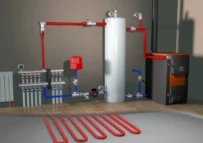
Heating system automation
How automation maintains comfortable temperature and protects the heating system
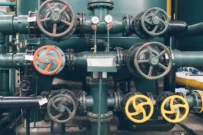
Room for gas equipment
Standards for boiler rooms: from air inlets to minimum façade distances
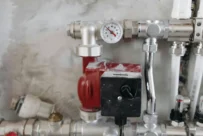
Gas equipment – part 3
Efficient heating: boiler capacity calculation and an overview of alternative heaters
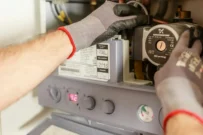
Gas equipment – part 2
Condensing boilers: how they work, efficiency, and when they pay off.
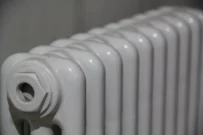
What kinds of heating devices are there?
Radiators, convectors, and underfloor heating: comparing design, heat output, and areas of application.

